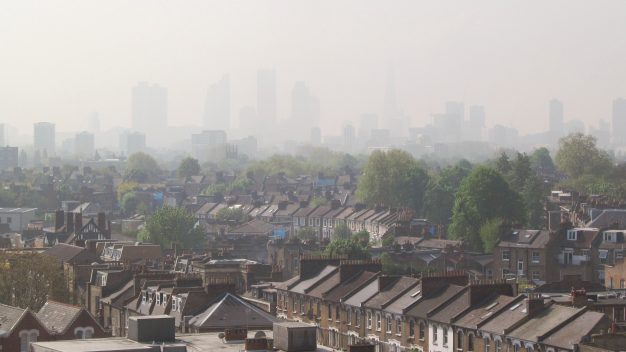
EU: Countries must tackle pollution and climate change to protect children
Air pollution and heatwaves are a factor in one in eight of all deaths in Europe, many of them children who are particularly vulnerable to environmental factors.
The European Environment Agency (EEA), in a report, says that high proportions of children in European cities are exposed to air pollution and noise levels that are above ‘healthy’ limits.
Children breathe more air, consume more food and drink water than adults in proportion to their weight, and as a result, tend to suffer the effects more than the general population. In 2012, the latest year for which data is available, around 630,000 deaths – roughly 13 per cent – in EU countries could be attributed to environmental factors.
The EEA calls for better access for children and vulnerable groups to green urban spaces to improve physical and mental well-being.
‘Strong action is needed to protect the most vulnerable’
Hans Bruyinckz, EEA Executive Director, said: “Strong action is needed to protect the most vulnerable in our society, as poverty often goes together with living in poor environmental conditions and poor health. Addressing these connections has to be part of an integrated approach towards a more inclusive and sustainable Europe.
The EEA says air pollution is the biggest environmental health risk in Europe, contributing to more than 400,000 premature deaths each year. Prolonged exposure to pollutants can cause diabetes, lung disease and cancer, and early evidence suggests air pollution may be linked to higher death rates among COVID-19 patients.
As the COVID-19 pandemic unfolded and countries began shutting down, pollution levels in Europe fell sharply, but this dip is expected to be temporary. Most EU countries, says the agency, are on course to miss their targets to cut air pollutants in the next decade.
‘Green space vital for children’
It said the coronavirus pandemic has highlighted the connection between the environment and human health, demonstrating the increased risk of passing diseases from animals to humans as a result of environmental degradation and meat production.
In tackling pollution and wider environmental issues, the report says that the presence of green space in local neighbourhoods is ‘especially important’ for children and other vulnerable groups. Spending time in these natural environments is also, says the agency, associated with improved mental and physical health.
“The benefits of access to biodiverse green spaces are particularly high for urban residents of low socio-economic status. Interaction with nature can contribute to treatment for depression, axiety and behaviour problems, including for children,” adds the report.
‘Children highly susceptible to heat stress’
It also highlights several studies in different countries into the relationship between green spaces and health. One Dutch study found that the relationship between lower morbidity – a person’s level of health and well-being – and a green environment was ‘more significant’ for children and people of lower socio-economic status. The report also points to findings from the World Health Organization that there is ‘growing evidence’ of the beneficial effects of nature on the mental health and cognitive development of children.
The issue of environmental noise and people’s health was also highlighted; the report pointed to studies that show aircraft noise causes around 12,500 schoolchildren to suffer learning impairment in school. Children are ‘more at risk’ of impacts on their cognitive development, have less well-developed coping strategies and less control over noise than adults. Road traffic noise also has an impact on children’s attention levels in school.
A section on environmental impacts on health and well-being says that children are highly susceptible to dehydration and heat stress because of their greater body surface area to volume ration. Heatwaves can also magnify the effects of allergens and air pollution, which impact children more severely than adults because of their underdeveloped respiratory and immune systems. This problem is most prevalent in cities, with many children in socially vulnerable communities living in dense, urban environments.
Click here for the full report.




